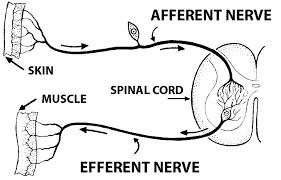Ramping Sets for Strength
September 1, 2015
Ramping sets are the simplest way to rapidly build strength.
By adding weight to your lifts you’ll progressive overloading your body and get strong, jacked, and develop a superhuman physique.
All you need to do is add weight to the barbell, pick up heavier dumbbells, and make small improvements.
Heck, if you bench press 95 pounds by adding only five pounds per week you’ll bench press 355 pounds in one year. If you follow this for three years?
You’d bench 563 pounds.
Unfortunately, few lifters bench press 315 pounds.
And 563 pounds? Well, save for the keyboard warriors on Reddit who bench 600, have 4% body fat, and weigh 220 pounds (sigh) only the genetic elite and most dedicated lifters can move such a weight.
As great and novel as the idea of progressive overload is, it has limitations, particularly if you follow straight set protocols.
Straight Sets vs Ramping Sets
Straight sets, also known as sets across or linear periodization is a progression model where you use the same weight for all your sets and reps, like bench pressing 95 pounds for five sets of five reps.
Problem is, 5×5 at 85% 1-RM gets increasingly difficult the stronger you get.
No longer is your max 185bs on the deadlift. It’s now 365lbs, significant training stress on your joints, muscles, nervous system, and psyche.
Soon, you’re no longer smashing your work sets with two minutes or rest in-between.
Far from it. Now, you’re heaving and hawing like American Pharaoh after the Preakness, and missing reps on weights you should crush.
By the fifth set, you’re cashed, pissed at your ineptitude, and questioning “whether this program even works.”
Straight set programs like Bill Starr’s 5×5 are classics that work great with beginners, but as your abilities in the gym improve your methods need to adapt to the greater demands of hard training.
In other words, you need to lift smarter.
This is done with ascending loading or ramping sets.
Instead of straight sets, you’ll start lighter, but increase the weight on each set, working towards a top-end work-set.
Ramping gradually activates your nervous system with progressively heavier weights, leading up to your heaviest work sets at the end of the exercise.
This way, you’ll lift heavy enough and with enough volume to strength and size. Even better, you’ll preserve your body from bombing out, missing reps, and wondering, “Is this program even working?”
P.S.Are you sick of spinning your wheels in the gym? Join the Chiseled Muscle Crew and grab your free copy of the Chiseled Muscle Cheatsheet
Ascending Loading Science
I already know what you’re thinking:
“Won’t ramping result in lifting less weight overall? I mean, if I’m using lighter loads early on won’t my total workload be less, and minimal my maximum swollage and training gains?”
No.
Think of your set-rem scheme as a multi-lap race.
If you blow through your fuel source from the get-go, you’ll fizzle out and get smoked in the last few laps.
When you’re using ramping sets you’ll grease the groove, reinforce your technique, and get dialed in for better lifting performance.
Most lifters blow through their gas tank during the first few sets. By the time they hit their last set, they can’t go heavy enough to set a new personal record or their technique falls apart, skyrocketing their risk of getting injured.
Ramping Sets: The Power of Submaximal Training
Now, before you run away and “tweet” Eric Bach says “only lift tiny weights, does he even lift, bro?”, let me re-iterate:
By using a gradual ramp, you’ll activate your nervous system gradually, preserving it for top end sets.
With ramping sets, you’ll gradually ramp up from 40-60% of your max towards 80% -1 RM or higher for pure strength work. This means you’ll start lighter, but potentially finish by lifting heavier weights.
This helps you in two ways:
By lifting lighter weights more explosively, you’ll develop explosive power, getting stronger and more powerful in the process.
By moving weights as fast and as hard as possible, you’ll recruit a greater number of muscle fibers for more muscle growth.
You’ll stimulate your nervous system to improve power and strength. And since the weight is a little lighter, you’ll hone in and lift with pristine technique rather than grinding through your fourth set of five reps before inevitably kicking your feet and getting pinned on your final set.
Submaximal ramping sets help you minimize fatigue during early work sets. This lets you reinforce wicked awesome technique and incredible bar speed for more power. You’ll preserve your nervous system for your heaviest sets.
CNS Potentiation Science:
Stay with me, as this gets a little deep. Keep your eyes on the bolded text if you want the cliff notes on how this will help your gains.
The driving force behind ascending loading schemes is potentiating the nervous system and muscles for greater levels of performance while intelligently managing fatigue associated with lifting big weights.
To better understand this, a few things happen as the nervous system becomes excited after a heavy resistance exercise:
- According to Hamada et. el (2000), there is an increased phosphorylation of myosin regulatory light chains during a maximum voluntary contraction (MVC).
This allows the actin and myosin binding (for muscle contraction) to react to the increased calcium release. This reaction triggers a cascade of events leading to enhanced force muscle production at the structural level of muscle (Horwath & Kravitz ).
Thus, increased muscle activation yields a greater duration of calcium ions in the muscle cell environment, yielding a greater phosphorylation of the myosin light chain protein (Rixon et al. 2007).
In other words, by moving the bar as fast as possible and/or against a heavy load, you improve force production at the muscular level.
Another Theory
The second theory is based on the H-reflex, an excitation of a spinal reflex elicited by afferent muscle nerves. It is theorized that the PAP intervention enhances the H-reflex, thus increasing the efficiency and rate of the nerve impulses to the muscle (Robbins, 2005).
Basically, your nervous system gets all jacked up and is prepared for increasingly heavier loads when you maximally contract the muscles through heavyweight or maximal bar speed.
When fatigue is managed in conjunction with increased nervous system function you have the recipe to generate more force and in this case, lift heavier weights.
How Many Ramping Sets Should You Use?
Here’s a sample progression on how you can implement ramping sets into your training. In general, I recommend 2-3 ramp up sets with a relatively short rest (60 seconds) in between. The goal of the ramp set is to acclimate to heavier weight, not fatigue your body.
Here’s an example:
Squat Training Max: 405 lbs
Set and Rep Scheme: 5×2
Heaviest Workload for the Day: 95% 1-RM= 385lbs
Warm-Up: 135×5; 185×5
Work Sets:
- 225×2
- 275×2
- 315×2
- 365×2
- 385×2
This way, you’re total volume will be lower. But each rep will be spot-on, powerful, and smooth. On the last set, you may be able to hit a personal record and accelerate your strength gains.
Straight sets are fine when you’re starting out, but as your experience improves your methods must adapt to your new levels of performance.
That means smarter progression and loading schemes, like ascending loading to take your gains to the next level.
That’s Not All:
Building a body that’s strong, shredded, and explosive isn’t easy. If it was, more of us would have the strong, lean, and athletic body we desire.
Let’s Face it
Most lifters plateau in the gym but stay mediocre because they continue doing what they’ve always done or, they follow a program that doesn’t allow them to train consistently.
Maybe you only heavy and train like a powerlifter.
Or, you do 12 variations of biceps curls and only train like a bodybuilder.
Or, life is crazy and you can only train three days per week…if you’re lucky.
Yet what you really want is to be strong, jacked, and look better naked. Well, I’m here to tell you it’s possible to look your best, be strong from head to toe without living in the gym.
How?
The process all starts with an intelligent workout plan to improve your performance and train consistently. Then, it’s reinforced by a healthy diet to give you more energy, support training, and carve away unwanted body fat.
This is exactly what I teach in our newsletter. Join the Chiseled Muscle Crew and grab your free copy of the Chiseled Muscle Cheatsheet
Ramping Sets Citations:
Hamada T, Sale DG, MacDougall JD, Tarnopolsky MA. Postactivation potentiation, fiber type, and twitch contraction time in human knee extensor muscles. J Appl Physiol. 2000 Jun;88(6):2131-7.
Horwath, R., & Kravitz , L. (n.d.). postactivation potentiation: A brief review. Informally published manuscript, Exercise Science , Retrieved from http://www.unm.edu/~lkravitz/Article folder/postactivationUNM.html
Rixon KP, Lamont HS, Bemben M. Influence of type of muscle contraction, gender, and lifting experience on postactivation potentiation performance. J Strength Cond Res. 2007; 21: 500–505.
Robbins, D.W. Postactivation potentiation and its practical applicability: a brief review. J Strength Cond Res. 2005, 19(2): 453-458.
Siff, M., & Verkhoshansky, Y. (1999). Supertraining: Special strength training for sporting excellence: A textbook on the biomechanics and physiology of strength conditioning for all sport (4th ed., p. 164). Denver: Supertraining International











[…] The Right Way To Implement Ramping Sets For Strength — Eric Bach […]
[…] The Right Way to Implement Ramping Sets for Strength via Eric […]
[…] Here’s how to Ramping Sets for More Strength […]
[…] process, known as ascending loading, gradually warms-up your body and nervous system, while managing […]
[…] Ramping Sets for More Strength […]
[…] Horizontal Push: Dumbbell or barbell incline, decline, or flat bench. We recommend performing an ascending loading scheme where you perform 1-2 warm-up sets, After the warm-up sets, increase the weight on each work […]